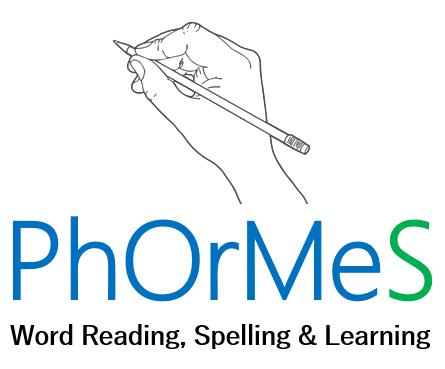Orthography
-
Orthography literally means correct (ortho) spelling (graph+y). A language’s orthography is its written form.
When we use spoken English, there is no orthography. When we use written English, we are representing our spoken language in orthography.
English orthography is very opaque, meaning that it does not simply follow 1:1 sound-letter correspondences like some other languages (see morphology section for more info about this). It contains many orthographic patterns which children must learn (either implicitly or explicitly) if they are to becomes expert spellers.
-
When referring to the term, orthographic’ in teaching spelling, we often use it to distinguish between spelling which is phonetic and spelling which conforms to the orthographically correct spelling (e.g. phonetic spelling- peepl vs orthographic spelling- people).
While contemporary research has clearly proven that spelling development does not progress strictly from non-phonetic to phonetic to orthographic, children’s early spelling attempts tend to reflect phonetic representations of words (e.g. kiss = cis, was = woz, black = blak/blac, flappy = flapee, give = giv, risked = riskt, large = larj and table = taibl). This is to be expected when children first learn to spell in English and is not a sign of weakness in spelling development in the early part of primary schooling. However, to master English spelling, more than phonics is needed…clearly!
One area that must be taught is morphology and etymology (see Latin and Greek morphology for more on this). However, morphology and etymology are huge areas that cannot be completely covered in the scope of a primary spelling curriculum. Sometimes, there are regular patterns that we see in English that good spellers detect. These patterns are orthographic patterns or spelling rules.
Some of the orthographic spelling rules we see in English are as follows:
Fszl (explains why fill, mass, buzz and staff have double lls, sses, zzs and ffs)
V and u + e (explains why give and true have an e after them)
Tch vs ch (explains why pitch has a tch while pinch and peach do not).
Suffix adding rules
211 rule (explains why the words forgetting and committee have 2 tts but budgeting and commitment have just one).
-
Coming soon
-
PhOrMeS teaches orthographic spelling rules. However, there are some caveats:
Truth be told, none of these spelling ‘rules’ are rock solid. There are always exceptions. Perhaps they are better labelled patterns with some of these patterns being highly consistent and others less so.
The rules are taught as avenues to showing children that there are common patterns seen in English spelling that aren’t simply phonetic.
The rules are not taught so that students can recite them; they are taught so that many words that share a common pattern are taught together and practiced to give children the best chance at adopting each of these patterns.
We don’t mind if children forget ‘the rule’ but spell the words that conform to the rule correctly (correct spelling, rather than explicit, retained knowledge of the wording of rules, is always paramount)
Teaching these as rules aims to improve the orthographic knowledge of students to help them progress from phonetic spellers to more orthographic spellers.
Spelling rules (or patterns) are taught with brief descriptions of the rule being covered along with example words. After this introduction, children read and spell words pertaining to the rule. They will be asked to justify their spelling choices according to the rule being taught.
